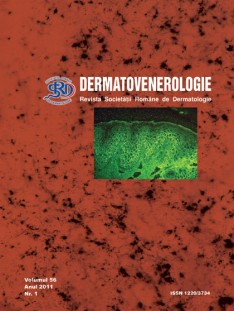General reviews
Histopathological features of granulomatous diseases
Granulomatous diseases are a group of various disorders, having different etiology and clinical findings, but with the same histopathological features (cutaneous or other organ granulomas).
The term „granuloma” comes form the latine –granulum (grain) +oma (the result of an action), and it is defined as a collection of histiocytes.
Based on histological features, taking into account the main cellular type, the histiocyte arrangement, the absence/ presence and type of necrosis, as well as the amount, the distribution and composition of the inflammatory infiltrate, the granulomatous disorders can be divided into five categories: epithelioid granuloma („naked granuloma”), tuberculoid granuloma, palisade granuloma, suppurative granuloma and foreign body granuloma.


